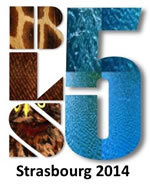|
|
|
Workshops > WS4Wildlife Satellite Telemetry
McConnell Bernie 1, Holland Kim 2, Holland Melinda 3
1: Sea Mammal Research Unit, Scottish Oceans Institute, University of St Andrews, United Kingdom (bm8@st-andrews.ac.uk) 2: Hawaii Institute of Marine Biology, USA (kholland@hawaii.edu) 3: Wildlife Computers, USA (melinda@wildlifecomputers.com)
A recent meeting of the Satellite Communications Forum in Paris (convened by UNESCO/IOC) highlighted changes occurring in usage patterns of scientists using satellites to uplink data. This community of users includes meteorologists, oceanographers and wildlife trackers. An analysis of use and pricing structure showed that animal trackers now comprise the single largest user group of Argos customers and yet they also pay disproportionately higher rates than other users. Further, there are very distinct geographical differences in the cost of satellite access. Whereas many programs are turning to the use of Iridium or other satellite service providers, the low power output of most wildlife tracking tags means that Argos is the only viable option for most programs. Consequently, for wildlife trackers, it is essential that Argos system remains viable and affordable. The SatComm forum also highlighted the lack of a unified voice to advocate on behalf of wildlife trackers. This side event is designed to share information regarding the SatComm forum and to provide an opportunity to discuss different perspectives of the tracking community and to possibly formulate some form of advocacy group. |


